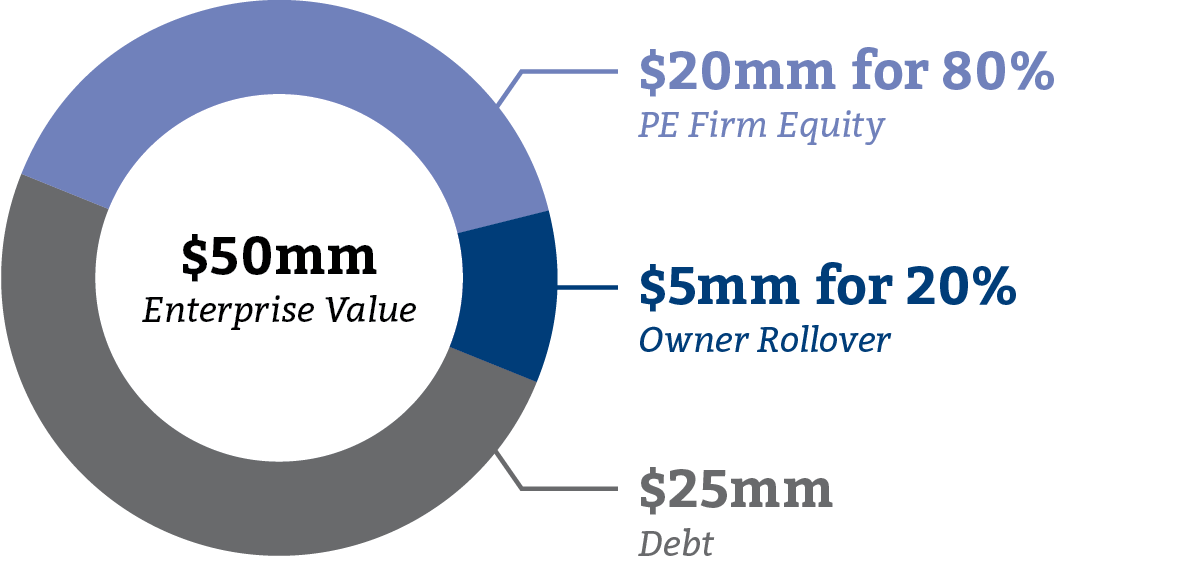The Situation
- Bob Smith is the owner and CEO of a successful family business and his children have decided to pursue other career paths and will not be joining him in the business
- Bob enjoys his work and sees excellent growth opportunities, but most of his net worth is tied up in the business and he would like to have financial security outside of the business and help with a succession plan
- For Bob, partnering with a private equity firm is an attractive option, enabling him to take chips off the table, continue to run the company now with his partner’s capital to grow the business, and eventually benefit from a second sale in 3–7 years

Typical Structure
- In this example, Bob’s business is worth $50mm and he’ll receive $45mm in cash at the time of sale.
- A private equity firm buys control of the company using $25mm of debt and $20mm of cash, with Bob rolling over $5mm of equity (equal to 20% of the equity).
- As Bob continues to run the business, he may also earn an additional 5% equity incentive as part of his compensation as CEO.
Partnership and Increased Returns
- In the initial sale, Bob has cashed out $45mm and his $5mm equity rollover gives him a 20% equity stake in the continuing business (due to leverage, Bob now owns $5mm of the $25mm of total equity, or 20%). Bob is not personally liable for the $25mm in debt, as that is a corporate obligation
- In 5 years, Bob and his private equity partners have fully paid off the $25mm in debt and have grown the business 3.0x, creating a company worth $150mm
- In a second sale for $150mm, the PE firm sells their 75% equity for $112.5mm, Bob’s 20% rollover equity and his 5% equity incentive, will together be worth $37.5mm
- Bob will have cashed out over $82mm in the aggregate, realizing far more than he would have if he had not partnered with a private equity firm while lowering his risk at the same time
Overview of Proceeds

